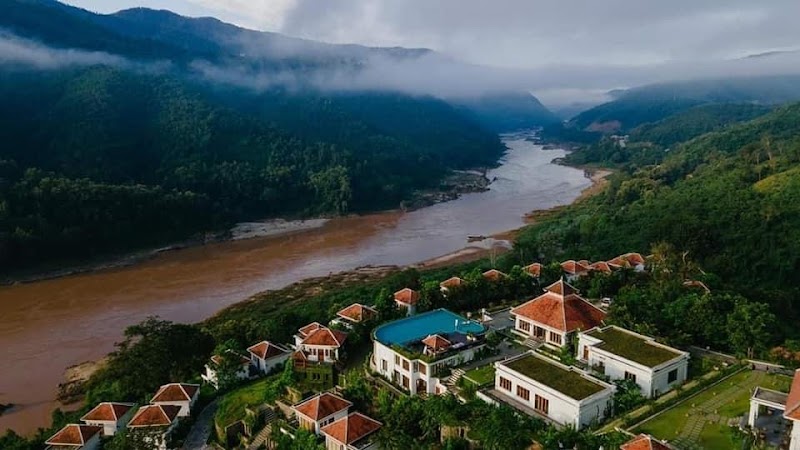
The Vibrant Bloom: Flower Festival at Doi Tung, Chiang Rai
Discover the Flower Festival at Doi Tung, where vibrant blooms meet mountainous trails in Chiang Rai this December. Experience a moderate hike through gardens and forest paths, capturing colorful landscapes while engaging with local culture and highland traditions.
Start Early to Beat the Crowd and Heat
Begin your hike at dawn to enjoy cooler temperatures and more serene paths before the festival crowds arrive.
Use Sturdy Hiking Shoes
The mixed terrain includes paved and dirt trails that can be slippery; solid footwear improves stability and comfort.
Stay Hydrated
Bring at least 1.5 liters of water to manage the moderate elevation gain and prevent dehydration during the climb.
Respect Local Customs During the Festival
Engage respectfully with hill tribe displays and vendors; photography is welcomed but ask permission when capturing people.
The Vibrant Bloom: Flower Festival at Doi Tung, Chiang Rai
Every December, Doi Tung in Mae Fah Luang springs to life with the Flower Festival, transforming this northern Thai mountain into a living gallery of color and culture. Located just a 20-kilometer drive from Chiang Rai city, the festival occupies the iconic Doi Tung Royal Villa and Royal Botanical Garden, where gardens brave winter’s crisp air to showcase thousands of blooms. The air here seems to pulse with the energy of petals stretching toward the clear blue sky, as orchids, roses, and native species dare the cold to hold them back.
For the adventurer, the festival isn’t just a floral exhibition—it’s a chance to immerse in highland hiking combined with cultural exploration. A moderate uphill trail of roughly 5 kilometers loops through shaded forest paths and terraced flower beds, climbing about 400 meters in elevation. Terrain is a mix of paved garden paths and uneven dirt trails, suitable for casual hikers yet engaging enough to keep seasoned trekkers attentive to roots and stones.
Early mornings offer cool, moist air that breathes freshness into each step, with breezes that tease branches and shake loose the scent of jasmine and frangipani. By midday, the sun presses down, demanding hydration and protective gear. Timing your hike to start early can also help avoid crowds, as many visitors arrive mid-morning.
Wear sturdy footwear; the earth beneath may play tricks with slippery leaves or unexpected mud patches from recent rains. Carry at least 1.5 liters of water, layering light clothing that can adapt to quick temperature shifts as you ascend. The Royal Botanical Garden’s attendants are on hand, offering maps and local tips, making navigation straightforward.
Beyond flora, the festival celebrates hill tribe cultures with traditional crafts and food stalls peppered around the garden precincts. This mingling of nature and people invites a respectful curiosity—listen for the steady hum of local music blending with the wind’s voice.
Though not a technical climb, respect for the mountain’s terrain matters. Doi Tung remains a living force, quietly demanding attention through steep sections and occasional gusts that rustle leaves like whispered warnings. The payoff comes in panoramic views where the lowlands stretch into hazy blue, framed by crisp mountain air.
For travelers intrigued by a compact adventure combining hiking, landscape photography, botanical marvels, and cultural insight, Doi Tung’s Flower Festival offers all in a practical, easily accessible package. Pack your camera, lace your boots, and prepare to meet a mountain vividly alive and fiercely itself.
Nearby Trips
All Adventures
Boat Charters
Water Activities
Adventures near Mae Fah Luang, Chiang Rai Province
Discover the unique and memorable adventures that make Mae Fah Luang, Chiang Rai Province special.
Frequently Asked Questions
What is the elevation of Doi Tung and how steep is the hike?
Doi Tung stands approximately 1,389 meters above sea level. The flower festival hiking loop involves a 400-meter elevation gain over about 5 kilometers, with moderate inclines and sections of uneven terrain.
Are there any lesser-known viewpoints at Doi Tung worth visiting during the festival?
Yes, the Ngoi Hu Viewpoint on the northwest side offers quieter, sweeping views over the lush valleys and distant ridges, often missed by the crowd focused on the main gardens.
What local wildlife might hikers encounter during the festival?
Early risers may spot multicolored bird species like the Silver Pheasant or small mammals such as civets moving silently through underbrush, all part of the living backdrop to the flowering spectacle.
What is the cultural significance of the Flower Festival at Doi Tung?
The festival celebrates the legacy of Princess Mother Srinagarindra, who pioneered sustainable development and reforestation efforts here, while promoting hill tribe art and handicrafts as a symbol of local pride and renewal.
Are there environmental concerns visitors should be mindful of?
Yes, visitors should stick to designated trails to protect native plant species and avoid littering. The area emphasizes conservation to maintain the delicate balance of its highland ecosystem.
When is the best time of day to photograph the flower gardens?
Early morning provides soft, directional light enhancing the vibrant colors of the blooms and minimizing harsh shadows. Late afternoon also offers golden hues and cooler light for striking shots.
Recommended Gear
Hiking Shoes
Provide grip and support across varying trail surfaces and potential mud.
Water Bottle (1.5L minimum)
Maintain hydration throughout the hike, especially when temperatures rise.
Light Windbreaker or Layered Clothing
Guard against morning chill and warm up-currents during the climb.
Camera or Smartphone with Good Lens
Capture vivid flower arrangements and panoramic mountain vistas.
Local Insights
Hidden Gems
- "Ngoi Hu Viewpoint for panoramic valley views"
- "Hill tribe handicraft villages just outside the garden"
Wildlife
- "Silver Pheasant"
- "Malayan Civet"
- "Varied Songbirds"
History
"Doi Tung embodies the sustainability work spearheaded by Thailand's Princess Mother during the 20th century, turning deforested hills into thriving green spaces while uplifting rural communities."
